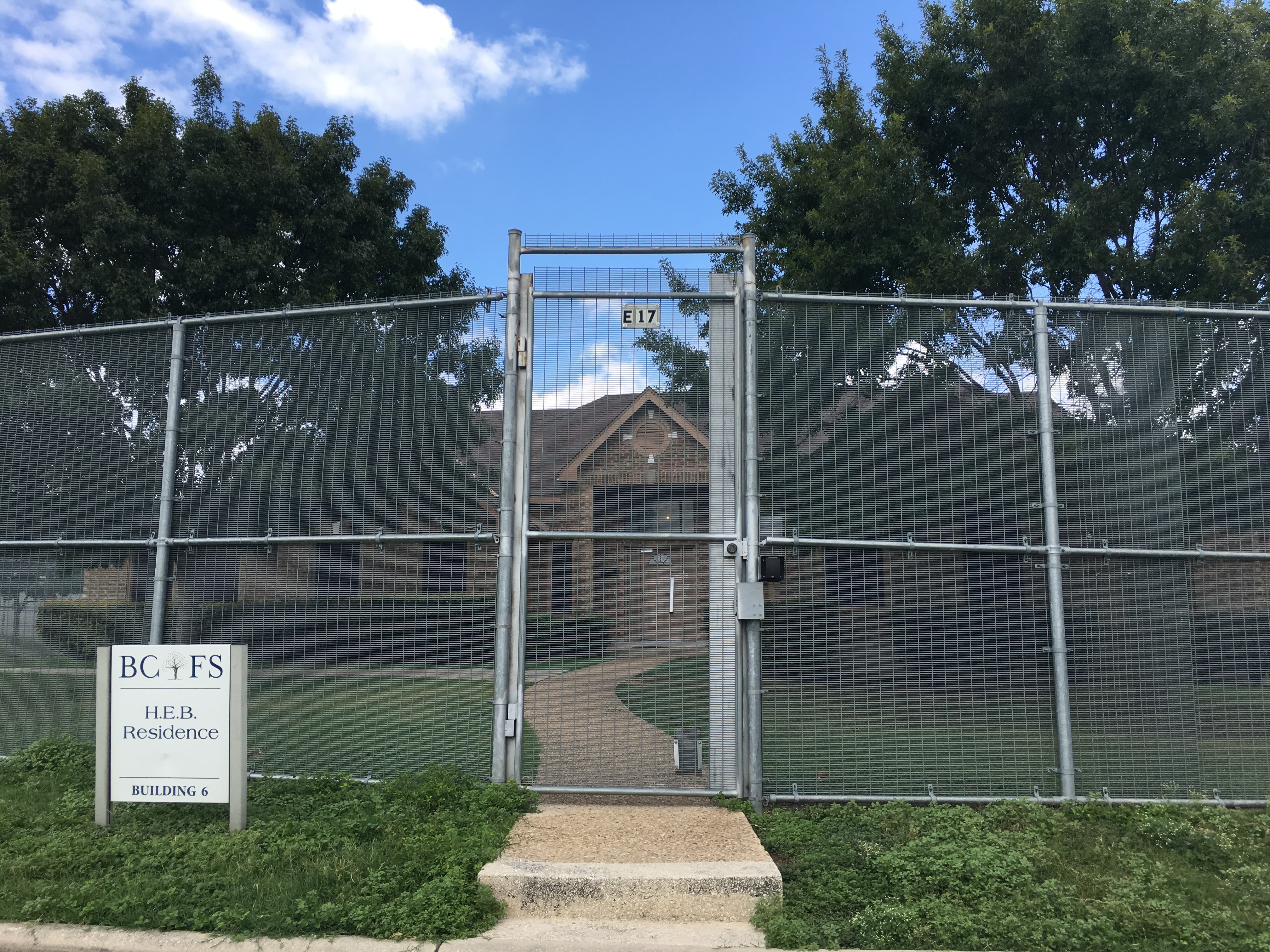
Photos from Inside Detention Centers for Migrant Children
American Oversight has obtained hundreds of photos that shed more light on the conditions inside detention centers for unaccompanied migrant children.

Hundreds of photos obtained by American Oversight — including photos of living areas and of handwritten complaint forms — shed more light on the conditions inside detention centers for unaccompanied migrant children, which are overseen by the Department of Health and Human Services.
President Donald Trump’s administration has overseen a huge spike in the number of migrant children and teenagers being housed in detention centers. Though some were separated from their families under the administration’s zero-tolerance policy, the majority of the minors crossed the border by themselves. They are first held in Customs and Border Protection custody — often longer than the legally allowed 72 hours — before being transferred to HHS Office of Refugee Resettlement custody and to one of more than 100 different facilities across the country.
Following reports of abuse allegations at secure placement facilities, American Oversight filed Freedom of Information Act requests for records that could shed light on the conditions immigrant children are subject to while awaiting a more permanent situation. To date, the government has released more than 1,000 photos of the facilities in response to those requests.
The photos from the HHS Administration for Children and Families (ACF) and the HHS Office of the Inspector General (OIG) are from two dozen different contract facilities and show sleeping areas, recreation rooms, and kitchens. There are photos of children’s artwork, as well as signs informing minors of how to report abuse and affirming pregnant teens’ right to seek an abortion — with some such signs displayed next to information about anti-abortion “crisis pregnancy centers.”
American Oversight has identified the detention centers that likely correspond to most of the photos we have received, though some locations remain unknown and a fair amount are not identified with complete certainty. (For more information about how we determined which photos are from which facility, see the complete collection of photos here and here.)
Young Children in Custody, Art Displays
According to a June Washington Post article, most of the unaccompanied minors in HHS custody are teenage boys. But the HHS contractors also housed children that had been separated from their parents at the border under the administration’s family-separation policy, and the records obtained by American Oversight include photos of high chairs, cribs and toys for very young children, indicating the range in detained children’s ages.
[metaslider id=”12225″]
Children’s artwork on display in classrooms and hallways appear throughout the photos, some of it referencing their experiences in getting to the United States, recent field trips, their favorite foods, or letters of farewell to the center.
[metaslider id=”12237″]
Abortion-Rights Notices Alongside Anti-Abortion Contact Information
In the documents American Oversight received from HHS, a number of photos show informational and bilingual signs with phone numbers to report abuse or harassment as well as notices saying, “If you are pregnant, you have the right to decide whether to have the baby or to have an abortion.” But next to this notice in a photo from the Friends of Youth home in Renton, Wash., is a piece of paper with phone numbers for anti-abortion organizations.
“If you are pregnant and want information about support for your pregnancy, you may speak to your clinicians,” the notice reads. “As an alternative, you may call any of the following organizations, which are experienced in counseling women who have an unexpected pregnancy.” Below that are numbers for crisis pregnancy centers — nonprofits that steer women away from abortion.
The notice appears on the wall of other facilities, including at New LIFE School in the Bronx, which is run by Lutheran Social Services of New York. Another photo from that facility includes a large, handwritten sign displaying the “Reglas De La Casa” — “house rules” that include rules like “no touching” and “no bad words.”
Photos from Controversial Shelters
The nation’s largest shelter operator, Southwest Key, was last month cited in an HHS Inspector General report for unsafe and unsanitary conditions at multiple locations. Southwest Key runs shelters in Arizona, California and Texas, and this month applied to reopen two shelters in Arizona that it had shut down in 2018 in a settlement with the state over allegations of abuse. This spring, the nonprofit’s CEO, Juan Sanchez, stepped down “amid outrage” over his 2016 salary of $1.5 million (the Washington Post later reported that he made $3.6 million in 2017). And last summer ProPublica reported on police reports and call logs from multiple shelters — including those run by Southwest Key — regarding sexual abuse incidents.
American Oversight obtained photos from Southwest Key facilities in Phoenix and Queen Creek, Ariz. and in Channelview, San Benito, and El Paso, Tex. The photos from the Casa Rio Grande facility in San Benito include a number of images of handwritten complaint forms, nearly all in Spanish, including some that appear to have been written by very young children.
[metaslider id=”12266″]
The documents also include photos from the Tornillo tent city, a massive facility in Tornillo, Texas. NBC News reported that HHS held more than 6,000 teenagers between June 2018 and January 2019, when the tent city closed. Late last month, Texas Health and Human Services confirmed that it had received applications for two new shelters for unaccompanied minors.
One of the more controversial shelters in the nation’s network of federally contracted facilities, the Homestead shelter south of Miami, also appears in the photos. Designated by HHS as a “temporary influx” facility, it was the only shelter not subject to state inspections. And unlike other facilities, it was run by a for-profit corporation and saw frequent visits from both protesters and presidential candidates. Earlier this month, the ACF announced that all children housed at the center had been relocated, having been either transferred to a state facility or reunified with a sponsor, but the Miami Herald reported that the facility is expected to reopen as early as October.
As the president and his administration work to make life harder for immigrants and ramp up the anti-immigration rhetoric in advance of the 2020 election, thousands of migrant children remain in HHS custody. American Oversight is continuing to investigate the administration’s immigration policies and the conditions in migrant shelters like those mentioned above. You can see the complete set of photos we’ve received so far here and here.